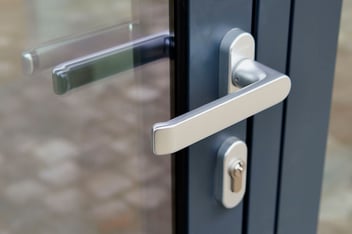Key Control: The Role of a Master Key [+Best Practice Tips]
![Key Control: The Role of a Master Key [+Best Practice Tips]](https://info.instakey.com/hs-fs/hubfs/Key%20Control-%20The%20Role%20of%20a%20Master%20Key.jpeg?width=512&height=274&name=Key%20Control-%20The%20Role%20of%20a%20Master%20Key.jpeg) It used to be that building managers and security personnel had to carry around multiple sets of keys to open individual rooms. Those keys could easily get lost, stolen, or duplicated. And if the security of one section became compromised, that meant a locksmith had to be called in to potentially rekey every lock in order to regain control.
It used to be that building managers and security personnel had to carry around multiple sets of keys to open individual rooms. Those keys could easily get lost, stolen, or duplicated. And if the security of one section became compromised, that meant a locksmith had to be called in to potentially rekey every lock in order to regain control.
But with the introduction of master key systems, keyed security can be more secure and easier to track without the need for several bulky sets of keys. In this article, we will discuss the role of a master key system and three best practices for maintaining a master key system.
What Is a Master Key System?
A master key system is a hierarchy made up of master keys, user keys, locks, and key users. Typically a user key can only operate a single lock, while a master key can operate all the locks in a building. This master key system can be organized into multiple tiers of security, allowing for different levels of master key access.
Store employees, in an example of a master key system, would carry a user key, which only opens one door, or a group of doors keyed the same in a single location. Store managers who need access to multiple areas in the building would carry a master key. The master key locks and unlocks every door in a single location. At the top would be the highest level employees, like regional directors, who would carry a grand master key, which opens every door of every location in their area.
Best Practice #1: Limit Your Master Keys
Regardless of which key system you use, your first best practice is to limit the number of people with keys to just the individuals who need access to certain secured areas. With a master key system, you should limit your master keys to just the people who need higher-level security access.
Best Practice #2: Use Restricted, Serialized Keys
An organization is at risk of a security breach any time a user key or master key is lost or stolen. Even more so if a key is duplicated without permission. Typically, when a key is unaccounted for, an organization with good key-tracking software finds out right away through an audit. But unrestricted, un-serialized keys can be duplicated without the organization knowing how many keys can access their facility. It’s important to use restricted, serialized master keys that are easier to track and can’t be duplicated.
Best Practice #3: Use Key Tracking Software
In addition to using restricted, serialized master keys and limiting them to just the people who need master key access, it’s important to have a scalable method to track your master keys. Paper files or spreadsheets may work for a small organization with few keys to track. But a master key system with many keys is too complex to track without proper key tracking software. Cloud-based key tracking software provides up-to-date information, real-time visibility, and comprehensive insight into your master keys, locks, and key holders.
Speak With an Expert
Master key systems are complex, and complex key systems need expert support. If you think a master key system might be the best security option for you, get in touch with the experts at InstaKey. Contact us today and find out how we can help you improve your key control program and reduce costs.




